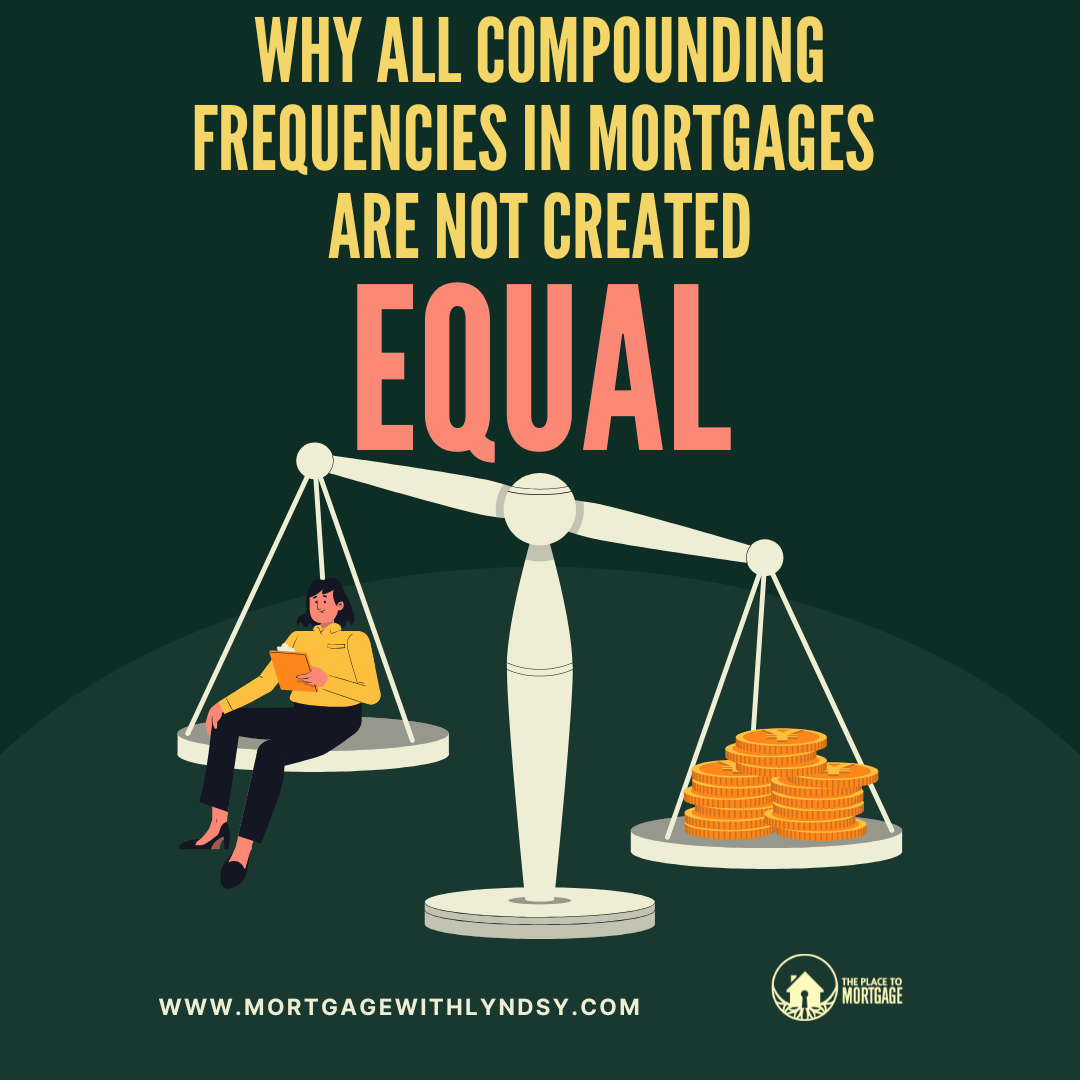Why All Compounding Frequencies in Mortgages Are Not Created Equal
When it comes to mortgages, many Canadians focus on interest rates, but one crucial detail often flies under the radar: compounding frequency. The way interest is compounded can significantly impact how much you pay over the life of your mortgage. Understanding this concept—and how it varies between lenders—is essential for making informed decisions about your home financing.
As a licensed Canadian mortgage broker, I’ve seen how compounding frequency can affect homeowners. In this blog, I’ll explain:
- What compounding frequency is.
- How different lenders, including major banks and monoline lenders, approach compounding.
- Why working with a mortgage broker ensures you don’t pay more than necessary.
What Is Compounding Frequency?
Compounding frequency refers to how often interest is calculated and added to your mortgage balance. The more frequently interest is compounded, the more you’ll end up paying, even if the interest rate itself remains the same.
How Does It Work?
For example, if interest is compounded semi-annually, it’s calculated and added to the mortgage balance twice a year. In contrast, monthly or daily compounding means interest is calculated and added more frequently, increasing the effective annual rate (EAR) or annual percentage rate (APR).
RBC’s Compounding Frequency on Variable Mortgages
One example to consider is RBC’s compounding frequency on variable-rate mortgages. Unlike most monoline lenders in Canada—which use semi-annual compounding—RBC applies monthly compounding for variable-rate mortgages.
Why Does This Matter?
Monthly compounding results in higher effective interest costs compared to semi-annual compounding. For instance, a variable mortgage with a 5.00% nominal interest rate compounded monthly has an APR of approximately 5.12%, while the same rate compounded semi-annually has an APR of 5.06%.
While the difference may seem minor, over the lifetime of a mortgage, this can amount to thousands of dollars in additional interest costs.
The Monoline Advantage: Semi-Annual Compounding
Monoline lenders, which are mortgage-focused financial institutions, typically use semi-annual compounding for both fixed and variable-rate mortgages. This means their products often result in lower overall interest costs compared to banks using more frequent compounding periods.
Who Are Monoline Lenders?
These lenders don’t offer traditional banking services like savings accounts or credit cards. Instead, they specialize in mortgages, offering competitive rates and terms tailored to borrowers.
Using a monoline lender could save you significant money over time. However, these lenders are accessible only through licensed mortgage brokers, adding another layer of expertise to your mortgage process.
APR: The Real Cost of Borrowing
When comparing mortgages, APR provides a more accurate picture than the nominal interest rate. It incorporates both the interest rate and the compounding frequency, reflecting the true cost of borrowing.
For instance:
- A 5.00% rate compounded semi-annually will cost less in interest than the same rate compounded monthly or daily.
- Understanding these differences can help you choose the best mortgage product, but it requires insight into how lenders calculate interest.
Why You Should Work With a Mortgage Broker
As licensed professionals, mortgage brokers are well-versed in the nuances of mortgage products—including compounding frequencies. Here’s why working with a broker is essential:
- Access to Monoline Lenders
Brokers provide access to monoline lenders that use semi-annual compounding, helping you save money on interest over time. - Unbiased Advice
Brokers aren’t tied to a specific bank, ensuring you get recommendations that align with your best interests—not the lender’s bottom line. - Expert Guidance
Compounding frequency is just one of many factors brokers consider when finding the right mortgage for you. We ensure you understand your options and how they impact your finances.
Not all compounding frequencies are created equal, and understanding the differences can save you thousands of dollars. As a Canadian mortgage broker, I’m here to help you navigate these complexities and find the best mortgage solution for your needs.
Whether you’re buying your first home, refinancing, or renewing your mortgage, working with me, licensed broker ensures you’re making an informed decision.
Contact me today and let’s talk mortgages!https://mortgagewithlyndsy.com/contact/
Sources:
- RBC Mortgage Rates: RBC Official Website
- Monoline Lenders and Mortgage Trends: Globe and Mail
- APR Explained: Financial Post

